1、(a)0.6*4 = 2.4,so the minimum support is 3
Part I
So ,frequent itemsets are :{{A},{B},{D},{A,B},{A,D},{B,D},{A,B,D}}
(b)
{a, b}{c}: confidence = 2/4=0.5
{c}{a, b}: confidence = 2/2=1
So ,confidence is not a symmetric measure.
(c)
�
2、
(a)
(b)
Apriori 算法: 3 次扫描数据库,并为了排除不满足情况产生了候补的子项,重复
的扫描。
FP-growth 算法:2 次扫描数据库,且不产生候补子项,在这方面要上优于 Apriori
算法,但需要借助 FP-tree 的搭建来产生频繁子项。
3、
(a)见下图
�
�
Question 1:
PartII
(1)Sort the rules by lift:
lift 的 5 个最高规则为:
1、tomato souce => pasta
2、coffee^milk => pasta
3、biscuits^paste => milk
4、water^pasta => milk
5、juices => milk
按照 lift 排序的前 5 个规则没有冗余规则
�
(2)Sort the rules by support:
support 的 5 个最高规则为:
1、milk
2、pasta => milk
3、water => milk
4、biscuits => milk
5、brioches => milk
从结果中可以看出规则 2,3,4,5 是冗余的,因为可以只通过销售 milk,而不需要
通过 pasta,water,biscuits 以及 brioches 来销售 milk,因此可以去掉。
(3)Sort the rules by confidence:
�
confidence 的 5 个最高规则为:
1、biscuits^pasta => milk
2、water^pasta => milk
3、juices => milk
4、tomato souce => paste
5、yoghurt => milk
按照 confidence 排序的前 5 个规则没有冗余规则
Question 2
1、
(a)当 Minimum records per child branch=56 时的混淆矩阵
(b)当 Minimum records per child branch=15 时的混淆矩阵
(c)当 Minimum records per child branch=10 时的混淆矩阵
�
2、在拓扑图中加入分析模块,得到各个树的正确率
Minimum records per child branch 56
正确率
错误率
71.5
28.5
15
84.5
15.5
10
84%
16%
根据正确率分析来看,当 Minimum records per child branch=15 时,正确率最高,因
此选择这个决策树模型。
3、首先构造要预测的数据文件 predict_data.txt,然后利用生成的决策树模型进行预测
预测结果如下所示:
其中最后一列$C-pep 即为预测的 RECOMMEND PEP 结果。
�

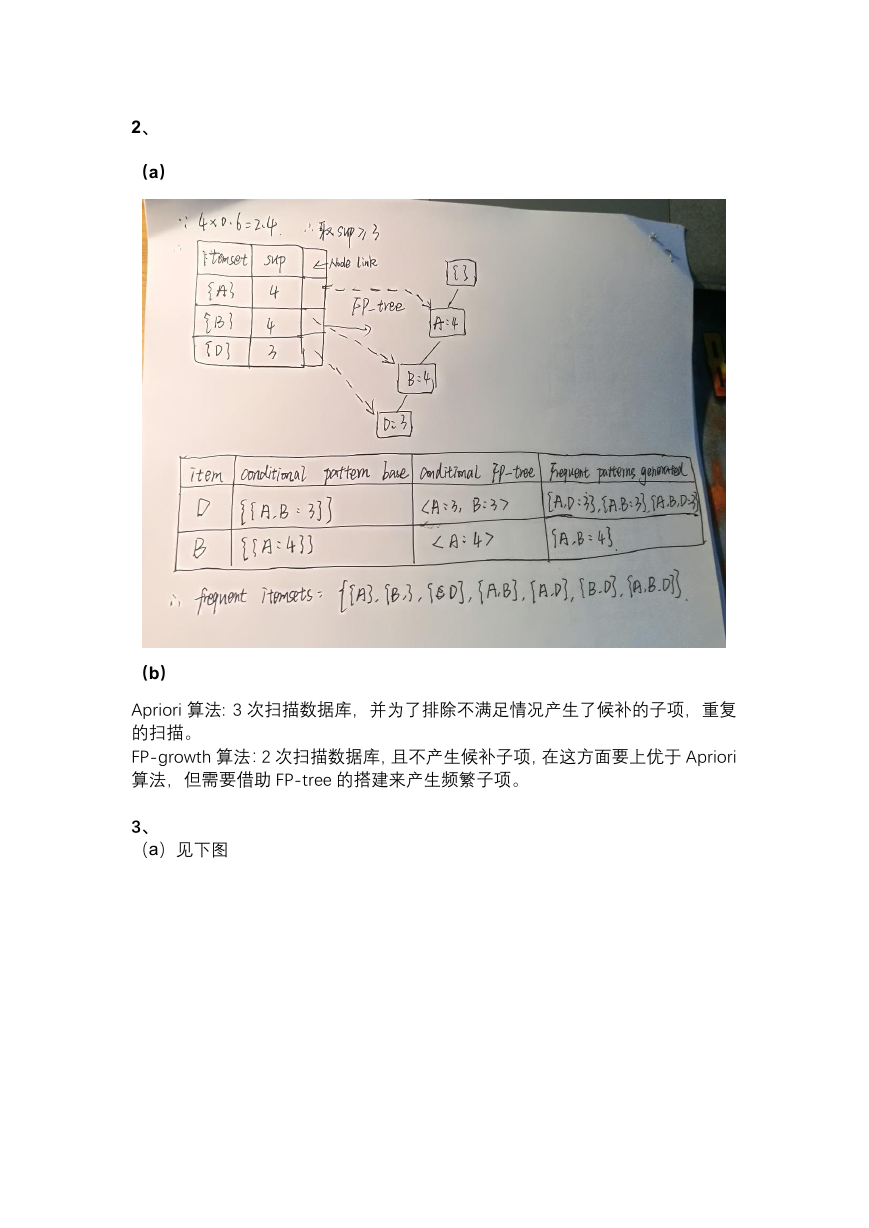
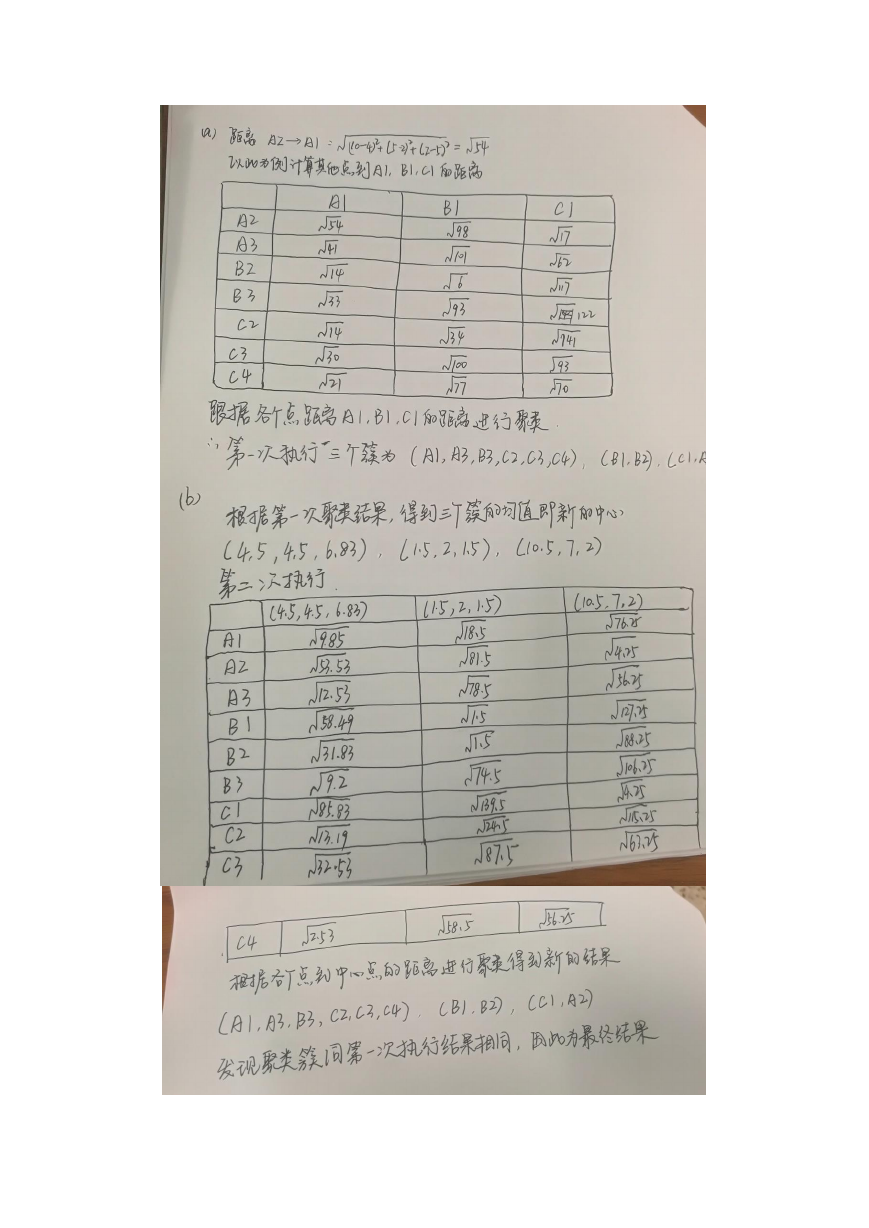
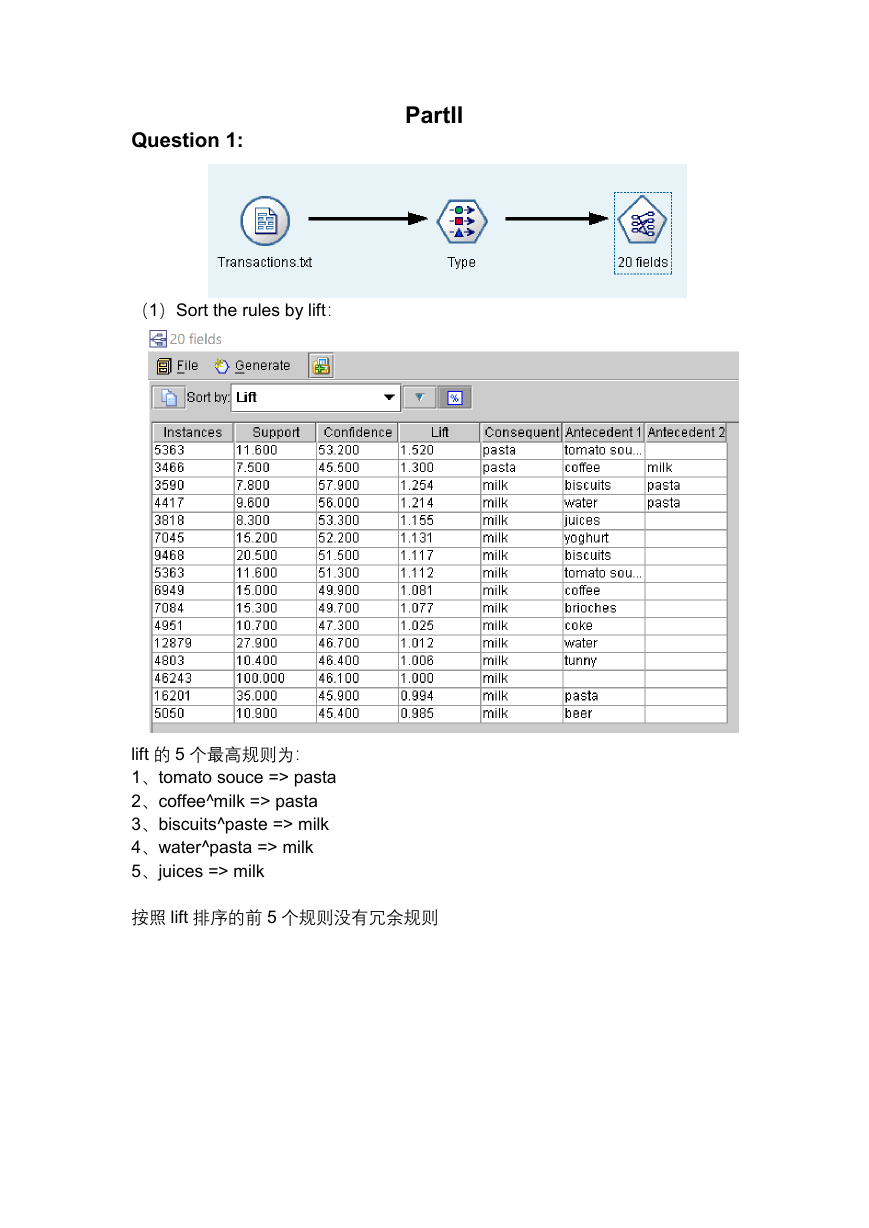
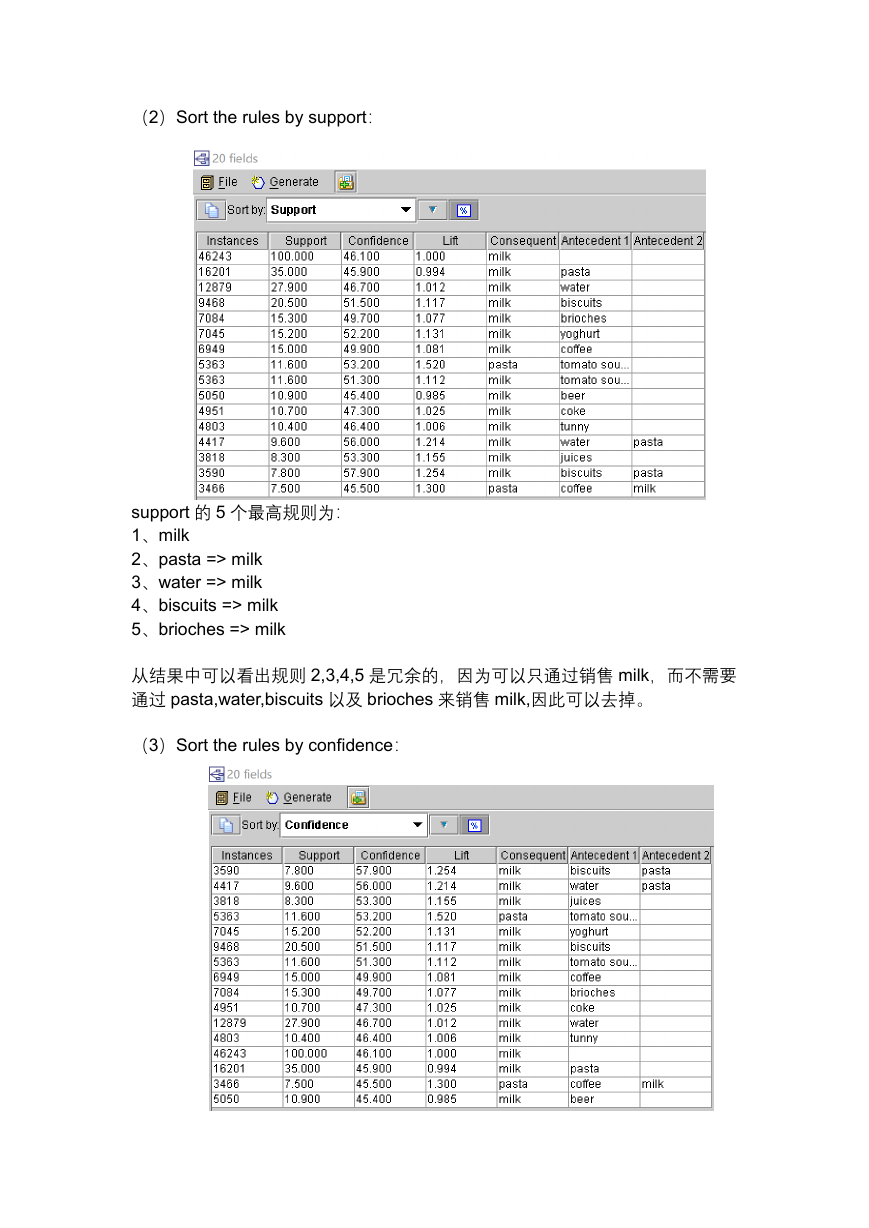
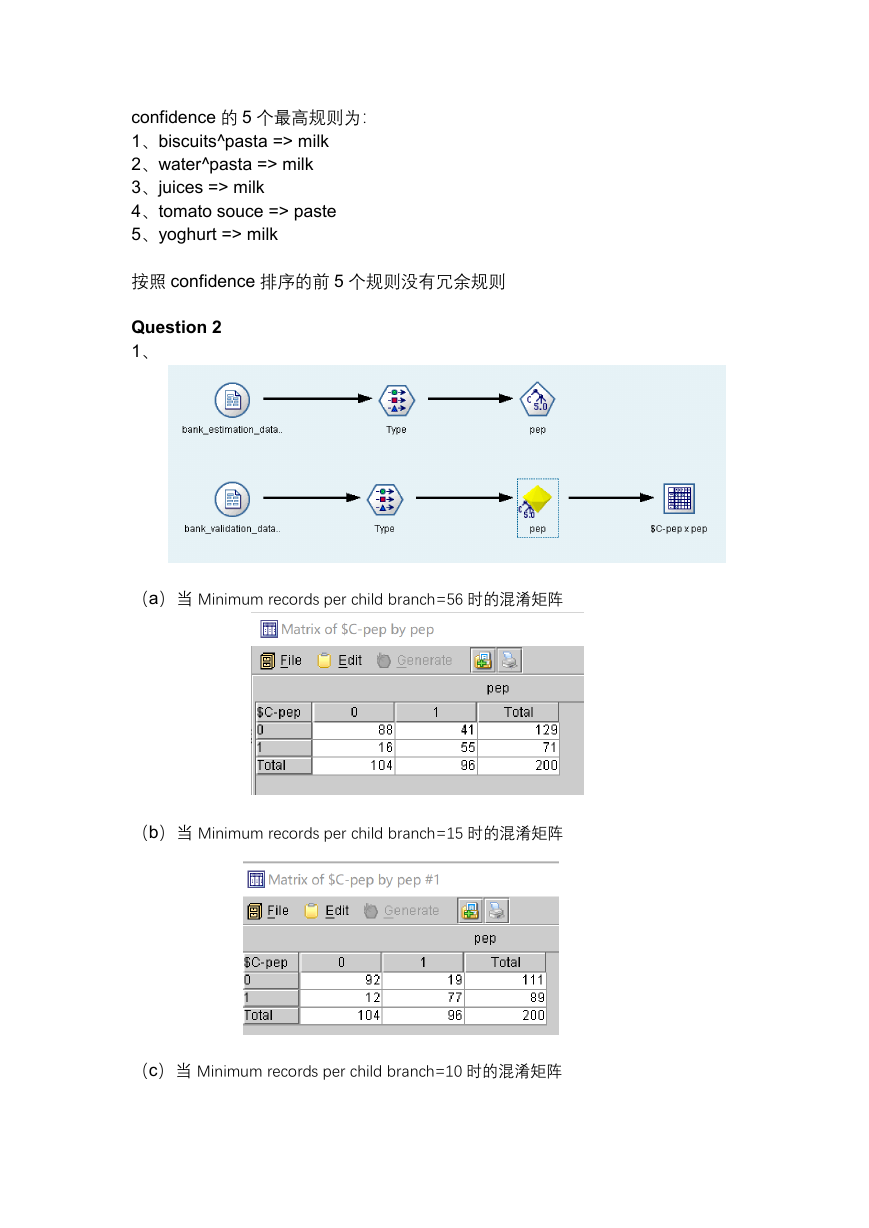
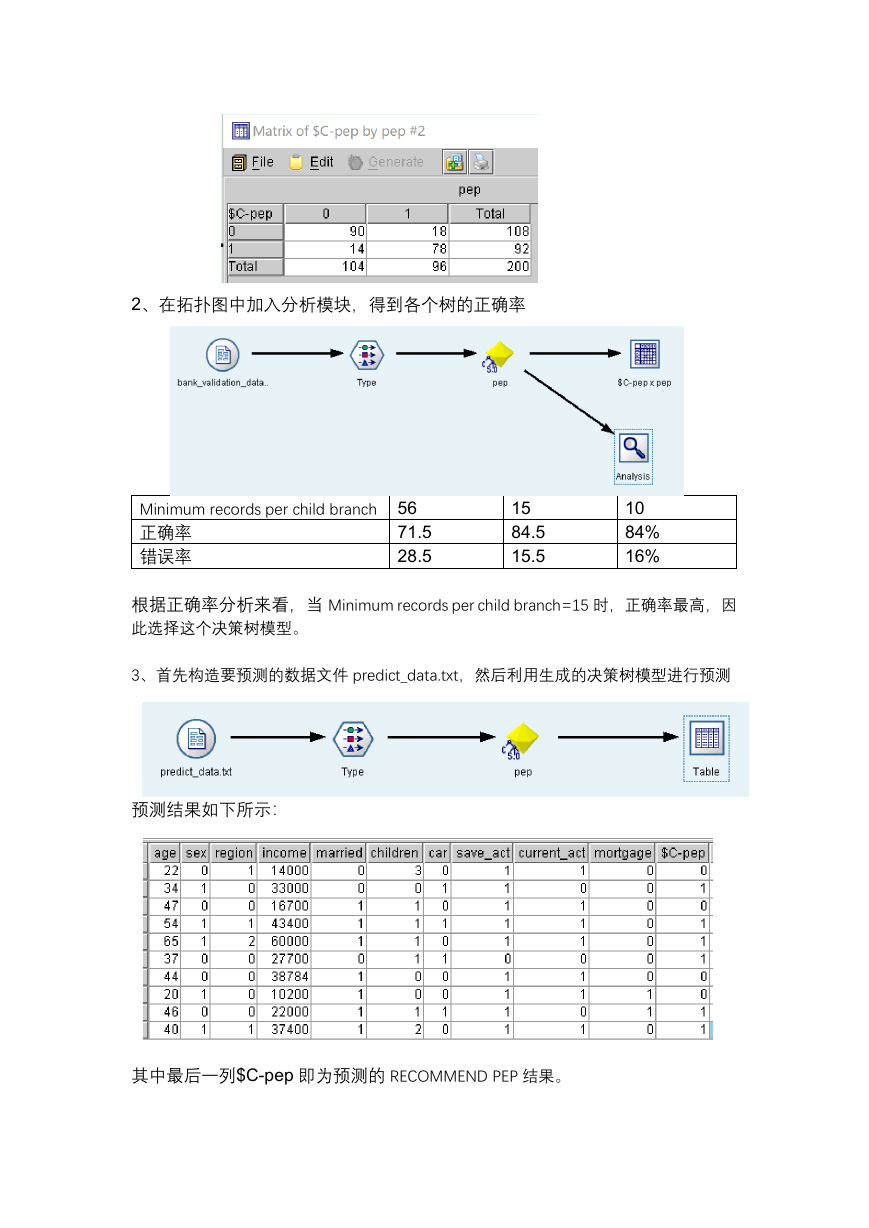







 2023年江西萍乡中考道德与法治真题及答案.doc
2023年江西萍乡中考道德与法治真题及答案.doc 2012年重庆南川中考生物真题及答案.doc
2012年重庆南川中考生物真题及答案.doc 2013年江西师范大学地理学综合及文艺理论基础考研真题.doc
2013年江西师范大学地理学综合及文艺理论基础考研真题.doc 2020年四川甘孜小升初语文真题及答案I卷.doc
2020年四川甘孜小升初语文真题及答案I卷.doc 2020年注册岩土工程师专业基础考试真题及答案.doc
2020年注册岩土工程师专业基础考试真题及答案.doc 2023-2024学年福建省厦门市九年级上学期数学月考试题及答案.doc
2023-2024学年福建省厦门市九年级上学期数学月考试题及答案.doc 2021-2022学年辽宁省沈阳市大东区九年级上学期语文期末试题及答案.doc
2021-2022学年辽宁省沈阳市大东区九年级上学期语文期末试题及答案.doc 2022-2023学年北京东城区初三第一学期物理期末试卷及答案.doc
2022-2023学年北京东城区初三第一学期物理期末试卷及答案.doc 2018上半年江西教师资格初中地理学科知识与教学能力真题及答案.doc
2018上半年江西教师资格初中地理学科知识与教学能力真题及答案.doc 2012年河北国家公务员申论考试真题及答案-省级.doc
2012年河北国家公务员申论考试真题及答案-省级.doc 2020-2021学年江苏省扬州市江都区邵樊片九年级上学期数学第一次质量检测试题及答案.doc
2020-2021学年江苏省扬州市江都区邵樊片九年级上学期数学第一次质量检测试题及答案.doc 2022下半年黑龙江教师资格证中学综合素质真题及答案.doc
2022下半年黑龙江教师资格证中学综合素质真题及答案.doc